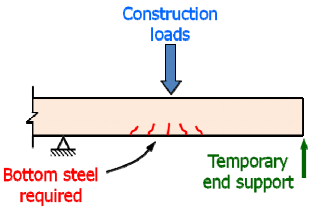hi guys,
during an inspection on site, i saw that for all the cantilever beams, the hook for the stirrup was at the bottom of the beam not at the top. When i discussed why it was done that way with the foreman, he told me that is because a cantilever beam. I couldn't find anything in the ACI regarding this subject.
Any thoughts whether he is right ?
during an inspection on site, i saw that for all the cantilever beams, the hook for the stirrup was at the bottom of the beam not at the top. When i discussed why it was done that way with the foreman, he told me that is because a cantilever beam. I couldn't find anything in the ACI regarding this subject.
Any thoughts whether he is right ?

